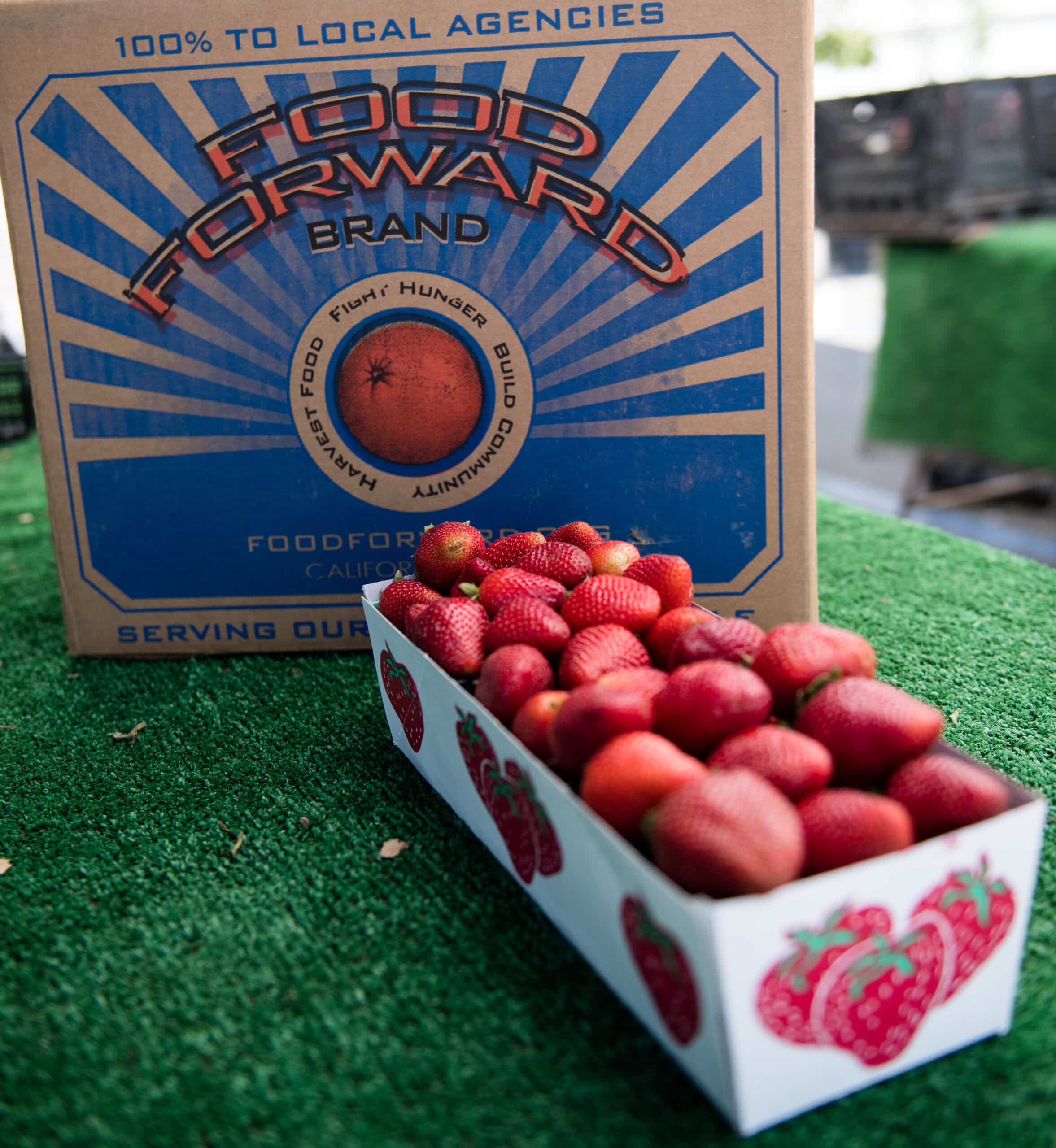By Andrea Howry, Ventura County Backyard Harvest Coordinator
I love strawberries. Lima beans, not so much. Sugar beets? Not sure I’ve ever tried one.
So it’s a good thing I’m living in California’s Ventura County now rather than 100 years ago, when lima beans and sugar beets were the predominant crops on the fertile Oxnard Plain.
Today strawberries are the number one crop in the county, having surpassed lemons about two decades ago.
The history of agriculture in Ventura County is the history of us. What was planted and harvested determined who lived here, who worked here, what buildings dominated the landscape, where the roads were and where the trains traveled. To a large extent, it still does.
That’s why I’m a Crop Report nerd.
Every year, the Ventura County Agricultural Commissioner publishes a Crop and Livestock Report. It tells what crops were harvested the previous year, how much they sold for, how much land they took up. Often, it mirrors the work Food Forward did that year, especially in the citrus industry. If warm temperatures and a good amount of rain resulted in a banner year for the commercial lemon industry, chances are lemons were also a top crop in Food Forward’s Backyard Harvest Program.
2002 marked the 100th year of the report’s existence—sweet words to someone like me.
I spend hours poring over those reports, looking for trends and trying to solve the puzzles they present. What happened to walnuts and apricots? When did strawberries become so popular, let alone avocados? And where in the world did the lima beans and sugar beets go?
Weather, plant disease, labor shortages, war and people’s fickle taste all contribute to what lies inside a crop report. Here are some of the top crops of years past, which rose and fell in popularity.
Lima beans: These were hugely popular around the turn of the 20th century. Bill Baker of Ojai was known for his Lima Bean Bread—gluten free!—which he shipped all over the country. But tastes change, and succotash suffered—except in 1942 when production of lima beans surged again. Why? They became a staple for World War II soldiers.
Sugar beets: For more than 60 years, the American Beet Sugar Company processing plant, built by the family that gave Oxnard its name, towered over the area. Trains brought acres and acres of labor-intensive sugar beets to the massive plant, and Japanese and Mexican workers poured into the area. But as cheaper sources of sugar became available, the popularity of the sugar beet faded. By 1956, only 2,451 acres in Ventura County were planted in sugar beets—compared to 20,000 acres of lemons and 16,000 acres of Valencia oranges. The sugar factory was demolished in 1959.
Citrus: The citrus industry gave Ventura County the nickname “Lemon Capital of the World.” Between 1932 and 1999, lemons were usually the top crop in the county, with Valencias usually coming in second.
Strawberries: In 1948, they popped up in the report under “miscellaneous fruit,” covering all of 13 acres. That’s up to 1,429 acres in 1972, the same year avocados took off.
Today, agriculture is a $2 billion industry in Ventura County, with strawberries valued at $662 million, avocados $245 million and lemons $206 million. Celery, peppers, raspberries, blackberries, blueberries, and cabbage are also in the top 10.
So what lies ahead? Will apricots make a comeback? Will artichokes enjoy some newfound popularity? Is the kale craze over?
Whatever it is, you can bet on two things: 1) Food Forward will be available to find a home for what goes unsold and uneaten, and 2) You’ll find me reading all about it in 2024, perhaps over a delicious bowl of strawberries…
Andrea Howry is a Backyard Harvest Coordinator at Food Forward. After a long career in newspapers, Andrea Howry planted new roots and became the Ventura County Branch Coordinator in July of 2019. She’d been leading backyard fruit harvests for about four years, hooked after the first pick when she found a bird’s nest in a citrus tree with a tiny blue egg inside. She and her husband have lived in Ventura for 32 years, raising three kids and several rescued dogs. She is a graduate of Stanford University and enjoys hiking and reading.

